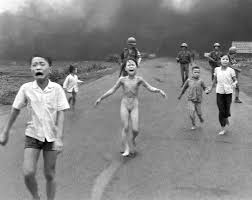The Significance of Napalm Girl in War History

Introduction
The image of the ‘Napalm Girl’ is one of the most impactful photographs from the Vietnam War, representing the horrors of armed conflict and the fragility of innocence. Captured by photographer Nick Ut on June 8, 1972, it depicts a young girl, Phan Thi Kim Phuc, fleeing a napalm attack. This iconic image not only stirred public emotions and protests against the war but also highlights the moral complexities of military engagement. Its ongoing relevance reflects the power of visual media in shaping societal views and political actions.
The Context of the Image
Photographed during a Vietnamese military operation, the backstory of Napalm Girl is both tragic and eye-opening. The day of the shooting, Phuc, then just nine years old, was running to safety with other villagers when they were accidentally bombed by South Vietnamese forces, who believed they were targeting an enemy outpost. The photograph captures the immediate horror of war, showcasing the suffering of innocent civilians, particularly children. Nick Ut’s photograph went on to win the Pulitzer Prize and catalyzed public sentiment against the Vietnam War.
Impact on Society and Media
The Napalm Girl image fueled protests and shifted public opinion about the Vietnam War, illustrating the consequences of military actions on non-combatants. The graphic content of the photo played a crucial role in awakening global awareness about the brutality of war, making it a pivotal moment in journalism and war reporting. In the decades that followed, the image has been used in various forms of media, becoming a symbol of the anti-war movement.
Long-term Reflections
In the years since the image was taken, Phan Thi Kim Phuc has become an advocate for peace and reconciliation, using her story to promote healing and understanding. Her journey from a napalm victim to a symbol of survival has inspired many, inviting discussions on the ethics of warfare, the importance of protecting civilians, and the role of journalists in bringing difficult truths to light.
Conclusion
The Napalm Girl photograph remains a potent reminder of the human cost of war and the necessity of compassion in conflict resolution. As global conflicts continue into the 21st century, the implications of Ut’s photograph remind us of our shared responsibility to address the humanitarian impacts of war. For modern audiences, the image serves as both a historical lesson and a call to action, underscoring the critical need for peace and diplomatic solutions in resolving international disputes.









